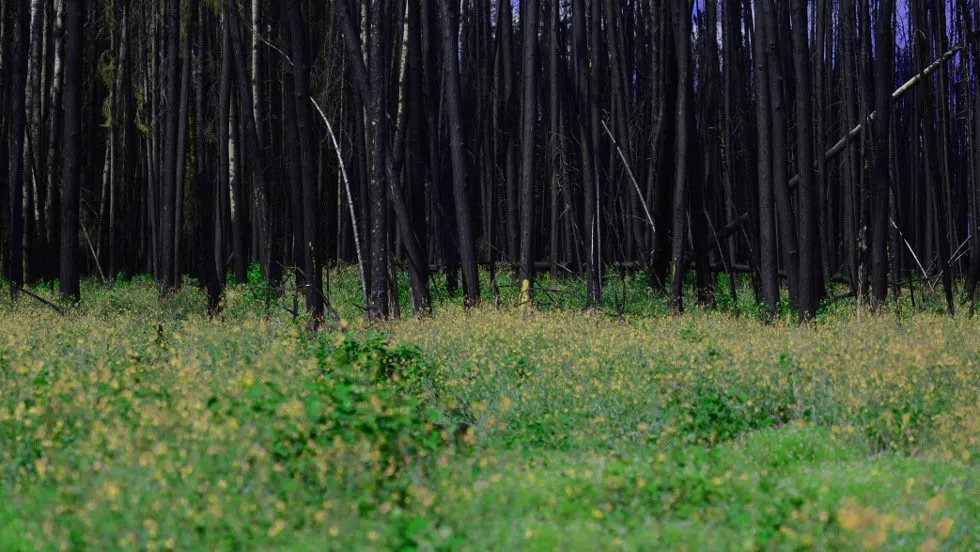
What grows in the wake of a devastating forest fire?
One year after a massive wildfire ravaged forests near Weyakwin, greenery has returned to the charred ground.
Ecologists and specialists with Saskatchewan’s Ministry of Environment said growth continues because the fire, which covered a sizable region to the boreal forest west of Weyakwin, wiped the soil clean.
“You’re starting fresh,” forest ecologist Michael McLaughlan said at the Weyakwin Fire Protection base today, June 23. “The fire burns off the organic material on the ground, exposing the bare mineral soil for seeds to germinate almost immediately.”
McLaughlan pinpointed the common jack pine tree as a specific species which requires forest fires to grow. Jack pine seeds are held in cones coated with a resin which only melts at 50 degree Celcius temperatures. When a wildfire rages through an area of jack pine, the seeds are released down to the fresh soil and quickly sprout.


